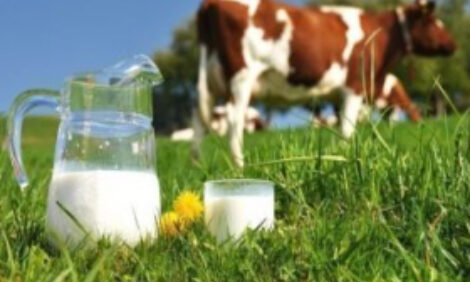



Beef Demand and Cattle Prices
Cattle prices are derived from the total value that consumers place on beef products, writes Derrell S. Peel, Oklahoma State University Livestock Marketing Specialist.Final consumer demand for beef determines beef carcass values and sequentially, fed cattle prices, feeder cattle prices, and calf prices. Supply works in the opposite direction as cow-calf producers act on the derived demand signals incorporated in calf prices to produce a supply of calves and which leads sequentially to feeder cattle supplies, feedlot production, cattle slaughter and total beef production. There are complicated and intricate dynamics of time and space in these multi-sector vertical market relationships, all of which contribute to making the cattle and beef industry a very complex set of markets.
The complexity increases when one realizes that beef demand is not a single market but is the net effect of the disassembly of beef carcasses into many products entering different, but often related markets. The total carcass value that drives beef and cattle markets is the net effect of several hundred products that result from slaughter and fabrication and ultimately become thousands of different products that are part of retail grocery, hotel, restaurant and institutional markets and exports, along with markets for edible offals and other by-products of cattle slaughter.
It is common in academic and industry discussions to refer to beef demand in the aggregate, often in the context of competing proteins, primarily pork and poultry. In reality, final beef markets consist of an immense array of companies and activities at the wholesale and further processing levels that link consumers with beef markets.
Recent research at Oklahoma State University highlights this diverse set of markets and the challenges of understanding beef demand when it is disaggregated into the myriad of individual beef product markets. The research drew heavily on interviews across the multitude of beef market sectors including packers; wholesale food distribution companies; further processors; retail grocery companies; restaurant companies and beef export specialists.
In total some 30 interviews were conducted across the country with companies representing a cross-section of the beef product industry including multiple firms at all beef market levels. These interviews provide a representative view of national and regional packing companies; further processing firms, including steak cutters providing portion control products as well as other processed product providers along with grinding companies providing hamburger for fast food restaurants; national and regional food distribution companies; and beef exports; as well as representatives of the 40,000 retail grocery stores and the 600,000 restaurants in the country.
Numerous issues and trends were identified in the research, which highlight the dynamic and evolving nature of beef markets. Important beef market factors include changes in beef demand following the 2008-2010 recession, impacts of record high prices in 2014-2015, increasing exports and impacts in specific beef markets, increasing demand for additional fabrication of beef products, the impact of increasing carcass size, demand for bone-in versus boneless beef products, fresh versus frozen products and the use of deep chill technology, increased demand for value-added products including more beef products resulting from additional fabrication as well as added-ingredient products, the role and increased marketing of cow beef, labor and trucking constraints, and the blending of beef marketing channels with growing popularity of home food delivery resulting from increased demand for restaurant take-out along with meal kits for home delivery or in-store purchase.
Beef markets are getting ever more complex, a trend that is likely to continue, if not accelerate. When the vast array of horizontal beef product markets is considered along with the complex set of vertical cattle and beef production sectors, all of which operate in complicated dimensions of time and space, there can be little doubt that the U.S. cattle and beef industry is one of, if not, the most complex set of markets on the planet.
TheCattleSite News Desk


